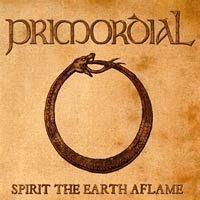If we were to sketch a genealogy of scholarship on animist worldviews, A. Irving Hallowell (1892-1974) might justly be listed as a founder. His classic paper on Ojibway ontology and world view (pdf) laid the foundations for the field. Less well known is Hallowell’s mentor, Frank Speck (1881-1950), whose Naskapi: The Savage Hunters of the Labrador Peninsula (The Civilization of the American Indian Series) (1935) is perhaps the first full-scale monograph that describes animist worldviews. Speck and Hallowell, both of whom spent decades living with aboriginal hunters in Canada, were deeply impressed by these people and their cultures. Though their combined ethnographic work is impressive in terms of descriptive detail, neither was content with mere description: they wanted to penetrate these “primitive” cultures and treat these with the analytical seriousness accorded to “modern” cultures. The overall result was that Speck and Hallowell provided us with a cogent philosophy of aboriginal hunting societies.
From this foundation, scholarship on animist worldviews has burgeoned in several different directions, and Speck-Hallowell can count many intellectual descendants. One of the more famous, or infamous, is former Rutgers historian Calvin Luther Martin, whose book Keepers of the Game: Indian-Animal Relationships and the Fur Trade (1982) ignited a major debate about pre-contact Native American worldviews. Martin’s primary protagonist in this debate was Shepard Krech, an anthropologist deeply familiar with Native American hunting practices and history. Without putting too fine a point on things, Krech argued that Martin’s views were romantic, idealist, and without foundation in fact. Martin apparently harbored nostalgic longings for a pre-contact past that had never existed, and if it did, we have no evidence for it.
Krech published his larger views on this subject in The Ecological Indian: Myth and History (1999), which is a rather sobering examination of American Indian hunting practices, land use, and “conservation” history. In Chapter Seven, simply titled “Beaver,” Krech presents what I presume to be his argument against Martin’s Keepers of the Game thesis, which was largely built on beaver hunting and the beaver trade. In the midst of this chapter, Krech touches on Frank Speck’s work:
In the late nineteenth and early twentieth centuries, white trappers, loggers, and others placed Northern Algonquian lands under increasingly relentless pressure. Like the Hudson Bay Company (“HBC”) earlier in the nineteenth century, several outsiders demonstrated a heightened interest in helping relieve the pressure. Filling a similar role taken by HBC traders in the 1820s to 1830s was Frank Speck, an anthropologist. In 1908, Speck began three decades of ethnographic observations among the Cree, Montagnais, Naskapi, Ojibwa, and other Algonquian people. From the 1910s through the 1930s, he was the single most influential proponent of the primordial nature of conservation and hunting territories. An anthropologist-activist dedicated as much to helping native people articulate their political causes as to the analysis of culture, Speck helped native people develop strategies to protect themselves from outsiders who wanted their lands.
As Harvey Feit, an anthropologist, revealed, Speck, drawing liberally on a letter by Armand Tessier, an Indian Affairs governmental employee, claimed that Indians possessed “instinctive” understandings of nature and that conservation was a “natural law” among them. In opposition — here was the relevant context for his remarks — hypocritical white intruders “often accused” native people “of being improvident as regards the killing of game,” and of being wasteful and thinking only about the present, and sought restrictions on Indian hunting and control over Indian lands.
Chief Aleck Paul of the Temagami Ojibwa confirmed this conservationist sentiment: “So these families would never think of damaging the abundance or the source of supply of the game, because that had come to them from their fathers and grandfathers and those behind them. . . . We would only kill the small beaver and leave the old ones to keep breeding. Then when they got too old they too would be killed, just as a farmer kills his pigs, preserving the stock for his supply of young.” In contrast, Chief Paul noted, was the white man “who needs to be watched. He makes the forest fires, he goes through the woods and kills everything he can find, whether he needs the flesh or not, and then when all the animals in one section are killed he takes the train and goes to another where he can do the same.”
Except for the ending, the imagery and language were largely Speck’s (and Tessier’s). Chief Paul showed that he could co-opt the language and imagery of private property and conservation to score points against outsiders who threatened. To achieve their goal-control over the exploitation of resources-all three mounted an argument based on primordial possession of private property and conservation principles. The Cree and Montagnais co-opted a similar imagery (pp. 195-97).
Here we have essential historical context for what Speck and Hallowell often presented, in their writings, as ancient or timeless practices. Martin took this a step further and presented these Native American worldviews as “pristine” and inherently conservationist. But as Krech bluntly notes elsewhere in the chapter, we simply have no evidence of a “primordial pre-European time.”


